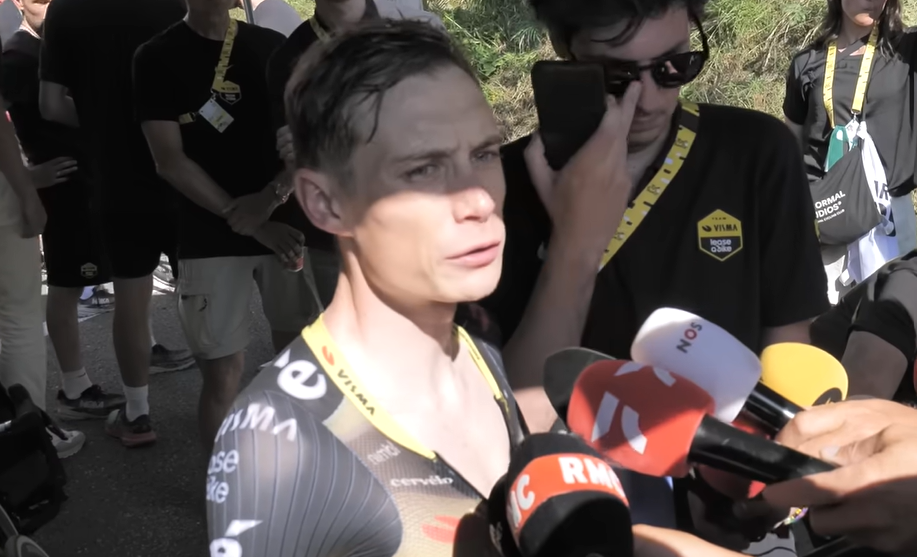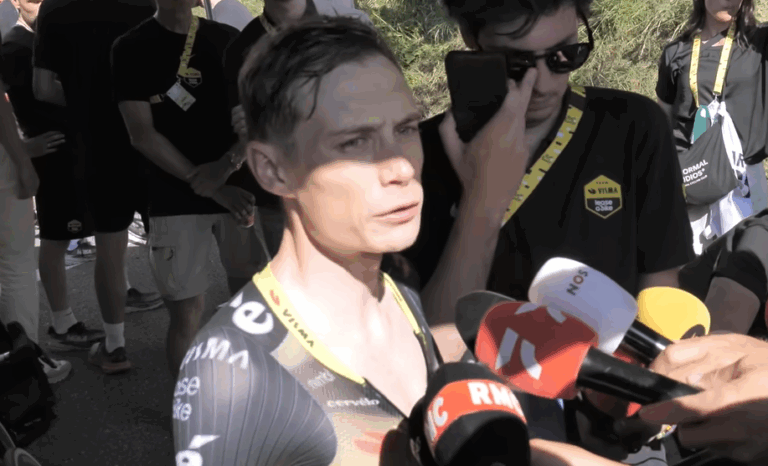Quietly, Jonas Vingegaard’s wealth has emerged as one of the most talked-about topics in professional cycling. From working shifts in a fish factory to winning the Tour de France twice in a row, his career advancement has paralleled the challenging ascents he makes on his bike. His 2025 salary is said to have approached $4 million, and his net worth, which is currently estimated to be between $6 and $8 million, reflects both podium finishes and a steadily growing brand.
His story has developed into an engrossing drama over the previous three years. In the past, Vingegaard was a quiet support rider. However, he dropped Tadej Pogačar on the Col du Granon by 2022 and confidently claimed the yellow jersey. His career took a drastic turn when he won that one stage, bringing with it a new rivalry and a new financial reality. In addition to earning a spot in cycling history, his victory on that Tour—and subsequent defense in 2023—placed him among the highest-paid riders in his sport.
Through a series of outstanding performances, Vingegaard went from being a dependable teammate to a leader who made headlines. Despite injuries, his net worth increased even more after his 2023 and 2024 campaigns, having already significantly increased after 2022. Fans and sponsors alike witnessed something more than athleticism in 2024, when he triumphed on a Tour stage after recovering from a punctured lung and multiple fractures. Instead, they witnessed resilience wrapped in Danish humility.
Jonas Vingegaard Net Worth Table
| Full Name | Jonas Vingegaard Hansen |
|---|---|
| Date of Birth | December 10, 1996 |
| Birthplace | Hillerslev, Denmark |
| Height / Weight | 1.75 m / 58 kg |
| Current Team | Visma–Lease a Bike |
| Role / Discipline | Rider / Road |
| Specialty | Climber, All-rounder |
| Tour de France Wins | 2022, 2023 |
| Annual Salary (2025) | Rs1,135,800,691 / ~$4M USD |
| Estimated Net Worth | $6 million – $8 million |
| Notable Titles | Vélo d’Or (2023), Tirreno–Adriatico (2024) |
| Family | Married to Trine Marie Hansen, 2 children |
| Reference Link | Paycheck.pk |

Vingegaard is appealing because of his subtlety, whereas other cyclists seek fame through extravagant social media and international collaborations. Athletes who allow their performance to overshadow their personalities have a story very similar to his. Vingegaard embodies discipline and genuineness, much like football’s N’Golo Kanté or tennis great Rafael Nadal. These qualities are not only novel, but they also work incredibly well to create enduring brand trust.
Vingegaard’s sponsorships are steadily growing, despite being less well-known than those of its more ostentatious competitors. His remarkably unambiguous storyline—a quiet, diligent professional who overcomes all obstacles—attracts brands. As a national hero and a worldwide symbol of tenacity, he has recently participated in regional campaigns throughout Scandinavia.
Characters like Vingegaard have contributed to the commercial boom of cycling, which was once thought to be a niche sport. Strategic rivalries, particularly with Pogačar, have allowed cycling to reach a wider audience. Like Federer, Nadal, and Djokovic in tennis, the Big Four narrative—which now includes Vingegaard, Pogačar, Roglič, and Evenepoel—has produced a personality-driven model. The potential income for individual cyclists has increased dramatically as a result of that change.
The career instability that plagues many young stars has also been avoided by Vingegaard by working with the management of his team and maintaining a stable personal life. Trine, his wife, has continuously contributed to his off-track persona. His appeal is based in large part on their relationship, which dates back to his early days at ColoQuick. They give off stability, which is hard to come by in contemporary sports.
Vingegaard’s net worth is particularly intriguing because of its history. It is compounding rather than merely rising. Prior to 2021, his earnings were modest, but they have increased significantly each year. These days, appearance fees, endorsements, and performance bonuses come in on a regular basis. His victory at the Volta ao Algarve in 2025 suggested even more earning potential and further solidified his dominance following the injury.
Few people in the professional cycling world are as cost-effective as Vingegaard. He makes every performance as valuable as possible. Sponsors are aware that working with him equates to projecting a reputation for dependability and hard-won excellence. Fans can use his story as a model for how hard work, good timing, and strategic skill can lead to success without compromising moral character.
A lot of athletes switched to media or branding tactics during the pandemic. On the contrary, Vingegaard emphasized the importance of performance, recuperation, and training. That decision worked surprisingly well. He consequently came back as a more formidable opponent even after the crash, winning over supporters not through showmanship but through sheer perseverance. His career teaches young athletes today how to develop their financial and reputational capital the old-fashioned way—with perseverance and results.
Through the combination of data-driven training and conventional endurance techniques, Vingegaard has maintained his high level of efficiency in a variety of terrains. He is now a standard for climbers and those hoping to establish long-term careers in sports. His example will probably be used as an example of optimization as fitness technology becomes more ingrained in professional routines.
He might become even wealthier in the years to come, especially if he moves into advisory, ambassadorial, or business positions. The emergence of endurance tourism and fitness platforms makes a person like Vingegaard extremely adaptable. His narrative and scientifically supported techniques can be used to promote alpine biking, write a memoir, or provide consulting for performance gear companies, among other industries.


